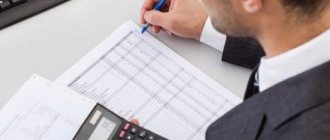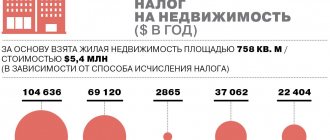How to find out what is included in the living space of a private house, and how it can be calculated
- Area of premises. This is a calculation of the size of the room, determined by the distance between the walls without taking into account the baseboards. If a stove or fireplace is installed in a private house, its dimensions are excluded from the area of the premises during calculations.
- The total area of the building is the total area of all residential and non-residential premises, which includes rooms, kitchen, vestibule, corridors, hallway and built-in closets. Previously, when calculating the total area, verandas, terraces and outdoor areas, balconies and loggias were taken into account, but now this rule has ceased to apply.
- Living area is the total size of living rooms; in documents they are taken into account as rooms intended for permanent residence of people. These are the kitchen, living room, bedroom, children's room, study, and this concept also includes dressing rooms.
- Usable area (in foreign standards it is designated as “used”). This is the total area of all premises; the area of stairs and staircases, as well as elevator shafts and ramps is excluded from this value.
The living area must be indicated in advertisements when selling, since this parameter allows you to estimate the actual size of the living space. So in a large house a spacious hallway or vestibule can be equipped, but the rooms themselves will be small and cramped. The decision must be made not only after evaluating the documents, but also after a visual inspection of the house.
Tax on private house and land for individuals
Last update 2018-11-22 at 15:18
The house tax is regulated by federal law, but some of its elements are set at the local level. Read more about how this tax is calculated and paid.
How to calculate house and land tax
The Tax Code provides for a differentiated system of property taxation for citizens - there are separate payments for land plots, for vehicles and for real estate (except land). If a person has all these types of objects, then he will be charged 3 different taxes.
What tax do you need to pay on your home? Personal property tax. Its regulations are contained in Chapter 32 of the Tax Code of the Russian Federation. Rates, benefits and deductions for it are also established by municipal laws. Chapter 31 of the Tax Code of the Russian Federation established a land tax, and some of its elements are also enshrined in acts of municipal authorities.
What tax do you need to pay for a house and a land plot - 2 different taxes, although from the point of view of civil law a house and a land plot are considered as a single property, called home ownership, but tax law divides them and charges a property tax for a house, and a land tax for a plot , i.e. the land plot is not subject to property tax, and the real estate on the plot is not subject to land taxation.
Both payments are local - their elements are approved at the local level, they go to local budgets and are distributed for the local needs of the territory.
Important!
The tax on land and buildings on the site does not require calculation from the owner. The amounts are calculated by the inspectorate to which these objects are attached. Based on the results of the calculation, the Federal Tax Service will send you a letter indicating the amounts to be paid.
But at the same time, the Tax Code of the Russian Federation sets out the calculation procedure for all payments. Any tax depends on the size of the tax base; calculating the base is almost calculating the entire tax, since the base is then multiplied by the rate and the amount payable is obtained. In some cases, the base is reduced by some deductions or multiplied by factors - decreasing or increasing.
Thus, the cadastral value of a plot is already universally recognized as the basis for land tax. This value is determined as of January 1 of the year. Previously, instead, the average estimated value of the site was taken as a basis, and the amount to be paid was very small. After the transition to the cadastre method, land tax increased significantly and became more tangible for owners.
The property tax base is either inventory value or cadastral value. Almost all regions of Russia have already made the transition to cadastral valuation, but some still use the BTI method.
Important! If you do not agree with the new amount, you can challenge the cadastral value. Only on this issue you need to contact not the Federal Tax Service Inspectorate, but Rosreestr, since the inspection does not have cadastral engineers and appraisers, all data comes from the Unified State Register of Real Estate, which is under the jurisdiction of Rosreestr.
The local rate, exemptions, and factors or deductions are also important when calculating your home tax.
Tax for a house on a summer cottage
The tax on a country house or dacha is often used to scare citizens in the press, talking about the introduction of payments for utility buildings on plots starting in the new year, incl. toilets, summer kitchens, etc.
However, these buildings are already subject to taxation, as stated in Art.
401 of the Tax Code of the Russian Federation, even unfinished objects must be paid for, but neither the Federal Tax Service nor Rosreestr is able to take into account all the objects that citizens are building, and citizens often do not report them.
But if the Federal Tax Service Inspectorate receives information about an unregistered object, the inspectorate will assess additional taxes on you, and also impose a fine for evasion of payments and a penalty for late payments.
It is optimal to inform the Federal Tax Service about all existing objects on the dacha plot, because you need to pay tax for the house on the plot, and for outbuildings used for gardening, gardening, etc.
economic and non-economic activities, you can receive benefits under Article 407 of the Tax Code of the Russian Federation. The benefit exempts from payment for all such objects with an area of less than 50 sq.m.
You can notify the inspection using a special form:
You can download it from
the link .
But a residential building on the site will be taxed. If an inventory base is used, a special coefficient is applied. If cadastral, the house tax is taken from an area over 50 sq.m., and the tax on a residential building up to 50 sq.m. is zero according to Article 403 of the Tax Code of the Russian Federation. And if you fall under the category of beneficiaries from Article 407 of the Tax Code of the Russian Federation, then you will not have to pay for the house.
What premises are taxed in a private home?
From the point of view of the Tax Code of the Russian Federation, the layout of the house, type of real estate and other data are not considered. The Federal Tax Service Inspectorate receives information from Rosreestr about the cadastral value (or inventory value in a number of regions) and calculates the total amount based on it.
The cadastral value is determined according to the methodology of cadastral engineers, which is not published on external resources. Among the determining factors are the area of the object, location, remoteness or proximity to the central infrastructure of the settlement, etc.
In the case of an assessment of the BTI, the so-called cost of the object. But in any case, the size of the house affects the property tax more than any other factor, and if the home has an attic or basement that is unsuitable for living, the price will be lower than with an attic and a residential basement.
Example 1
Galkin Alexey has a house with an area of 105 sq.m., and also has a large spacious attic, not used and not designed for residential purposes. In this regard, when determining the cadastral value, it was not taken into account as a residential area.
As a result, the tax on a private house of more than 100 sq.m will depend on other factors - what materials it is made of, the distance to socially significant objects, etc.
Is the basement of a private house subject to tax?
In the case of a basement, the Federal Tax Service will not even know about it - it will look at the data from the Unified State Register, take the cadastral or inventory value as a basis and calculate your fiscal payment. Tax on a house of 140 sq.m, 180 sq.m, 200 sq.m.
m, etc. will correlate with the cadastral value, and the luxury tax, which the press also often writes about, is not provided for in the Tax Code of the Russian Federation: the tax base and tax rates are not differentiated depending on the area and cost of the object.
You can also view the cadastral value of your property through the Rosreestr website:
- Open the website .
- Go to the section for individuals.
- Select a service.
- In the service form you need to indicate the details of your apartment or house.
- View the result.
Is the terrace included in the total area of the house when calculating the tax?
If you are building a large house with a terrace and you are concerned that the area of the property is 250 sq.m. and whether such a property can be classified as luxury, you should take into account that the tax on a house of 250 sq.m., and on 120 sq.m.
m and 30 sq.m are calculated according to the same rules - according to Article 403 of the Tax Code of the Russian Federation, i.e.
a non-taxable area of 50 square meters is deducted, and then the remaining base is multiplied by the rate established by local laws.
How to view the local law in your territory through the Federal Tax Service website:
- Open the website .
- Go to the current tax system in Russia.
- Open the local taxes section.
- Select the required line - property tax.
- Go through the menu to the benefits section. You can also scroll down the page using your mouse wheel.
- Open the local benefits tab.
- Here you will see a link to the required service.
- In the service, specify the parameters you need.
- The law of your locality will be revealed to you.
Is the ground floor included in the total area of the house for tax purposes?
The basement floor will undoubtedly increase the cadastral value, but if it is non-residential, then the increase will be small compared to the entire residential floor at the basement level.
If the basement is used as a garage and is so documented, then it is a property tax item other than a house - a garage or parking space - and is taxed according to the general rules, but in most municipalities, garage owners are exempt from paying this payment.
If the ground floor is used as a gym, swimming pool, storage room and other similar purposes, then it will be considered simply non-residential and thus will be marked in technical terms, but will fall into the area of the house, although it will not affect the cost so much.
Tax on the foundation of a private house
A common practice is to build a foundation that will remain unchanged for several years. Do I need to pay it to the budget? Firstly, all buildings with a foundation are classified as real estate, which means they fall under Chapter 32 of the Tax Code of the Russian Federation. Secondly, in Article 401 of the Tax Code of the Russian Federation in paragraph 5.
1 indicated among the taxable real estate are unfinished construction objects. Thus, the foundation is taxed.
But it is taxed if the Federal Tax Service knows about it, and in order for the inspectorate to know about your property, it must be registered in the cadastral register or a report to the tax office about the existing property must be submitted.
If you do neither one nor the other, you will not have to pay anything from the foundation, but if the tax office discovers this object, for example, during cadastral work, which is carried out at the initiative of the state, the inspectorate will immediately charge you fiscal payments.
The same thing happens with the tax on a built house.
And if you report real estate to the Federal Tax Service, but without registering it in the Unified State Register of Real Estate, then for 10 years or until the year of its registration in Rosreestr you will pay increased land tax, which compensates for the lack of information about the cost of the house.
Tax on a house with an attic
When building, buying and renting a house, you should take into account that the cost per square meter of an attic is less than the cost of living space in a two-story house. Consequently, the tax rate for attic premises is much lower compared to second floor premises. When calculating the tax, the attic is taken into account only if the distance from the attic floor to the lowest point of the ceiling is at least 2 m. If this distance is less than 2 meters, then the attic is not taken into account for tax purposes. Calculating tax on a house with an attic
, the area of the attic is conditionally assumed to be equal to 50% of the area established in accordance with Part 2 of this article. Thus, to reduce property taxes, it is more profitable to build a one-story house with a low attic.
Let's look at an example of calculating tax on a house with an attic
. Technical inventory authorities estimate the cost of a house in accordance with special collections, and then multiply the resulting value by a coefficient established for each region. According to the information contained in these collections, the estimated cost of 1 m³ of a one-story brick house with an attic is 24.5 rubles. To simplify the calculations, let’s take the area of a one-story house to be 100 m², and the height of the first floor to be 2.5 m. The cubic capacity of the attic floor is calculated individually. In any case, the volume of the attic will be less than the volume of the first floor. Let the total volume of the house with the attic be 450 m³. Thus, the inventory value of the house will be equal to:
Interesting: If a house is declared unsafe, what is the period for resettlement?
Changes in calculations
Nevertheless, many are interested in what house tax is due in a particular case. Indeed, in 2020, new changes regarding the payment under study came into force. They caused a lot of problems for the owners. In particular, due to calculations.
Previously, based on the provisions of the legislation of the Russian Federation, the tax was calculated taking into account the inventory value of real estate. As a rule, she was not too tall. Therefore, payments did not come in particularly large amounts.
But now everything has changed. At the moment, the calculation of property tax for individuals will take into account the cadastral value of housing. This figure turns out to be quite high. This means, as some news reports said, we can expect a significant increase in the amounts due for payment. Sometimes such payments can exceed those that came previously by 5-6 times. It is very difficult to calculate the exact amount. After all, the tax base will be the cadastral value of the home.
We suggest you read: Minimum wage tax
How to - calculate, clarify - or reduce the area of the house
When it comes to regular payments, many property owners consider it advisable to clarify: is the area of the house indicated in their documents correctly? Is there any error? In addition, some are looking for a way to reduce this amount one way or another in order to save on taxes. We will consider all the identified issues by contacting a specialist.
But it should be remembered that it is possible to exclude any areas from the total area of a residential premises, without carrying out work on the reconstruction of this house, if previously this area was mistakenly included in the area of a balcony, loggia, veranda or terrace, or areas premises not intended to satisfy citizens' household and other needs related to their residence in residential premises, for example, the area of a garage, experts note.
Calculate total area
The design of individual houses is carried out in accordance with SP 55.13330.2011 “SINGLE APARTMENT RESIDENTIAL HOUSES”. According to SP 55.13330.2011, clause 4.7, the Rules for calculating the area of premises, determining the volume and number of floors of a building and the number of floors are adopted according to SP 54.13330 “Residential multi-apartment buildings”. Let's look there. Appendix B (mandatory) paragraph B.1.1 The area of a residential building should be determined as the sum of the areas of the floors of the building, measured within the internal surfaces of the external walls. The floor area includes the area of balconies, loggias, terraces and verandas, as well as landings and steps, taking into account their area at the level of a given floor.
B.2.1 The area of apartments is determined as the sum of the areas of all heated premises (living rooms and auxiliary premises intended to meet household and other needs) without taking into account unheated premises (loggias, balconies, verandas, terraces, cold storage rooms and vestibules). The area occupied by a stove and (or) fireplace, which are part of the heating system of the building (and are not decorative), is not included in the area of the apartment premises. The area under the flight of an internal staircase in an area with a height from the floor to the bottom of the protruding staircase structures is 1.6 m or less is not included in the area of the room in which the staircase is located. When determining the area of rooms or premises located in the attic floor, it is recommended to apply a reduction factor of 0.7 for the area of parts of the room with a ceiling height of 1.6 m - at ceiling angles of up to 45°, and for the area of parts of the room with a ceiling height of 1.6 m. 9 m – from 45° or more. The areas of parts of the room with a height of less than 1.6 m and 1.9 m at the corresponding ceiling angles are not taken into account. A room height of less than 2.5 m is allowed for no more than 50% of the area of this room. B.2.2 The total area of the apartment is the sum of the areas of its heated rooms and premises, built-in closets, as well as unheated rooms, calculated with reduction factors established by the rules of technical inventory.
Interesting: How to calculate for unused vacation upon dismissal
Calculating house taxes using a calculator
For RBC Real Estate, realtors previously calculated that the updated tax would have a greater impact on owners of luxury real estate. Owners of an apartment with an area of 206 square meters, for example, on the Ostozhenka metro station, will have to pay more than 170 thousand rubles, taking into account the tax deduction. in year.
- residential premises and houses;
- objects of unfinished construction if a residential building is the intended purpose of these objects;
- real estate complexes, if they include at least one similar premises, namely a residential building;
- garages and parking spaces equipped for housing.
What is included in the tax calculation calculator for a private home: tax deductions in the amount of 20 sq. m for houses, 10 sq. m for rooms in houses and 50 sq. m for individual housing construction objects.
How is house tax calculated?
The tax is paid by individuals once a year. The basis for its calculation is the cadastral valuation of the property. The amount of obligations to the budget is derived by multiplying the cadastral price and the tax rate. From 2020, the option of calculating tax based on cadastral value will be the only possible one; now, in some cases, it is possible to use inventory value adjusted taking into account the deflator coefficient.
House tax (IHC) is calculated separately from other assets, since different types of property are taxed at differentiated rates. Liabilities are calculated based on the cadastral value established at the beginning of the tax period for which the tax is calculated. If the value of an object changes during the year, such adjustments will not affect the tax for the current year; the change in data will be important when calculating the tax for the next period.
When calculating the size of the tax base for a residential building, a tax deduction is applied: it is necessary to subtract the cadastral value of 50 square meters from its full cadastral value. m. When calculating tax on a part of a residential building, a deduction of 20 sq. m. applies. m. From the tax period of 2018, an additional deduction is applied for large families (if there are 3 or more children under 18 years old) - 7 sq.
Example
Garden house tax: studying the new tax code
- Heroes of the Soviet Union.
- Heroes of the Russian Federation.
- Disabled people (childhood, 1st and 2nd disability groups).
- Participants in the Civil and Great Patriotic Wars, and equivalent combat veterans.
- Liquidators of the accident at the Chernobyl nuclear power plant.
- Military personnel and military pensioners with more than 20 years of service.
- Family members of fallen servicemen.
- Pensioners, as well as people who have reached retirement age (55 years for women and 60 years for men).
- When calculating based on cadastral value, the tax rate for individuals cannot exceed 0.3%. Therefore, if the value of the property is 2 million per year, you will have to pay 2,000,000 x 0.003 = 6,000 rubles.
- But when calculating by inventory value, the maximum rate can reach 2%, which for the same two million rubles will already give 2,000,000 x 0.02 = 40,000 rubles.
House tax
In reality, pensioners are beneficiaries. And they have special rights in tax obligations. House taxes are no exception. What can every pensioner count on? He is entitled to complete exemption from property tax. Moreover, regardless of your health or social status. In Russia, all people who have reached retirement age are completely exempt from paying this penalty. And it doesn’t matter where exactly a person lives. The main thing is that he lives on the territory of the Russian Federation. It follows from this that, as already noted, the payers of the payment under study are only able-bodied adult citizens. Children and pensioners do not pay this tax in any way. Every citizen should take this fact into account.
Interesting: A continuous marking line along the road allows
It all depends on the financial capabilities of municipalities. In the Moscow region, for example, the search operation has already been widely deployed; a large number of not just mansions, but huge properties with courts, swimming pools and saunas, have been found, the owners of which hide the fact of the existence of the property.
Who pays
Who can receive property tax payment receipts{q} This question, as a rule, causes some difficulties at some point. Why{q}
We invite you to familiarize yourself with: What taxes are paid upon entering into an inheritance and who is exempt from paying
The thing is that the tax on a private house or any other property is levied on all taxpayers. That is, if a citizen is 18 years old, he is fully capable, he owns either a house, or part of it, or at least a room, then he will have to pay money. More on calculations later.
https://www.youtube.com/watch{q}v=crussia24tv
Problems arise for citizens who have reached retirement age. After all, these are eternal beneficiaries. Should they pay this kind of penalty{q} Or does this category of citizens have their own benefits{q} If this is so, then only adult able-bodied persons are payers. And organizations (including individual entrepreneurs).
How to calculate the area of a house calculation formula
Using the already known formula, we will obtain an indicator of the area of one of the walls. In the same way, we will calculate the area of all external walls of a residential building. After this, you need to add up all the obtained values and the result will be the area of the external walls of your house.
- When designing future housing.
- When carrying out direct construction work for the correct calculation of consumables.
- For finishing work.
- When registering home ownership with the justice authorities.
- To obtain the BTI technical plan.
- When renovating the interior.
- When registering the purchase and sale of housing.
- When renting out housing.
Private house tax
Private houses are most often defined as country houses, at least if they are located outside the urban area. And while this fact may affect the amount of tax, it does not affect the payment procedure. The first and main point for correctly determining a plan of action is establishing the circle of subjects. They are the ones who are required to contact the tax service and pay the annually considered tax option. Not every citizen who touches country houses, apartments, or buildings on a plot of land, even if he is the person who built it or left it unfinished, will pay tax.
When calculating, you should pay attention to the possibility of receiving benefits. For example, no matter how many people live in a house, only the area that exceeds 50 square meters will be taxed. That is, when a house has an area of 100 m2, then the tax will be charged only for half. A house with a smaller area is not subject to taxes. Other benefits for certain categories of persons, tax deductions and even complete exemption from tax obligations are also possible.
Benefit restrictions
But if a citizen has a large house, then he may never receive a deduction. Indeed, modern calculation rules have certain restrictions. Not all cases qualify for the standard square footage deduction.
The cost of real estate plays a huge role. If it exceeds 300,000,000 rubles, then no deductions are allowed. These are the rules that apply in Russia at the moment. Fortunately, even a fairly large house is not valued at that amount. The bulk of the population is entitled to the previously mentioned deductions.
It should also be remembered that the benefit is provided only for 1 property of each type. What does this mean{q} Let's assume that a person owns 2 apartments and a house. What next{q} He can receive a deduction for 1 of the apartments he has chosen and separately for the house. You will have to inform the tax authorities about your choice in advance.
We invite you to read: How does net operating income after taxes give a clearer picture of a company's performance? — 2019
In a year, the tax on houses and dachas could increase 125 times
“It is for this reason that our company was chosen to carry out the assessment work. The BTI archive stores information about about 10 million capital construction projects in the Moscow region. The technical passport, which is in the BTI archives, contains much more information than the State Property Committee. With the help of archives, we supplement the information of the State Property Committee, determine the percentage of wear in order to make the most transparent and honest assessment.
— But in order to use the services of the MFC, you must first register your property, put it on the cadastre, clarify the boundaries of the site, register the house, and “link” it to the site. A lot of fuss. Probably half of the property owners in the Moscow region have not done any of this. And for some - the whole thing.
22 Jul 2020 glavurist 4798
Share this post
- Related Posts
- What can regional maternity capital be used for?
- Property tax for 2020 for individuals payment deadline
- Sample Apartment Rental Agreement Sample 2020 Between Individuals
- Cold Water Tariff Per Cube According to the Meter in 2020 Moscow Region






